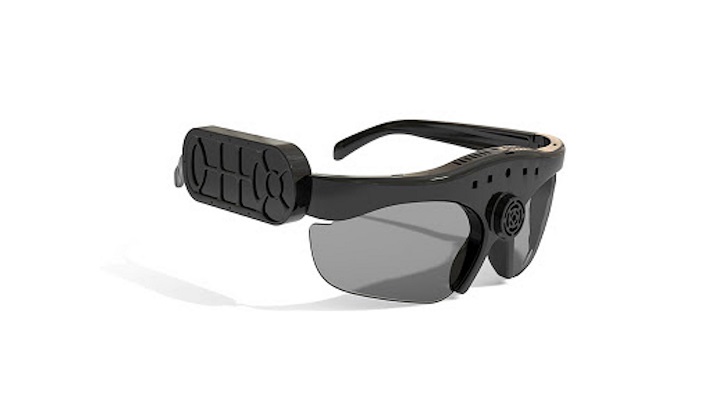Discover Advanced Assistive Gadgets for People With Visual Problems
The landscape of assistive technology for individuals with visual impairments is evolving swiftly, presenting an array of innovative devices that enhance freedom and involvement. From clever glasses that flawlessly combine aesthetic input with acoustic guidance to innovative navigation applications that redefine spatial awareness, these tools are reshaping possibilities.
Smart Glasses Innovations
Smart glasses stand for a substantial advancement in assistive technology for individuals with aesthetic problems. Outfitted with cams and sensing units, smart glasses can capture real-time aesthetic info, which is then refined and communicated to the user with sound responses or haptic experiences.
Furthermore, improvements in fabricated intelligence have even more boosted the abilities of wise glasses. Equipment knowing algorithms can identify faces, reviewed text, and recognize things, making them vital tools for day-to-day jobs. Individuals can obtain auditory hints that give context regarding their atmosphere, fostering independence and confidence.
Additionally, the ergonomic style and light-weight nature of numerous wise glasses make them appropriate for prolonged use, ensuring comfort while improving performance. As these gadgets remain to evolve, they hold the potential to revolutionize the method people with aesthetic disabilities experience their daily lives, connecting the space between access and technology. The ongoing r & d in this area promise to broaden the possibilities for clever glasses, making them an important component of modern assistive tools.
Navigating Apps and Tools
Many navigation apps and tools have emerged as important resources for people with aesthetic problems, dramatically boosting their capability to pass through unknown environments. These modern technologies utilize GPS functionality, audio cues, and real-time data to give users with accurate navigating aid.
One famous example is the Aira app, which links customers to skilled agents that can give aesthetic descriptions of surroundings and navigating guidance through an online video clip feed. This solution enhances the customer's spatial awareness and self-confidence while navigating. One more noteworthy device is Seeing Eye GPS, which supplies voice-guided navigating and factors of rate of interest, allowing users to accessibility important info about their environments.

As technology proceeds to breakthrough, the development of more sophisticated navigating tools assures to more equip people with visual problems, helping with smooth wheelchair and combination into varied environments. Such developments contribute in promoting a more inclusive society.
Braille Modern Technology Advancements
In recent years, improvements in Braille innovation have actually significantly transformed how individuals with visual disabilities accessibility info and engage with the globe around them. The growth of portable Braille screens has transformed analysis by enabling individuals to connect wirelessly to tablets, computer systems, and smartphones. These tools convert text into Braille in real-time, enabling seamless communication with digital content.
Furthermore, innovative Braille printers have actually emerged, enhancing the production of tactile products. Modern embossers are much faster and more effective, enabling the quick production of Braille documents and instructional materials. This effectiveness decreases the moment and price connected with creating Braille resources, making them extra available to institutions and companies.
In addition, the combination of Braille with other modern technologies, such as expert system and machine understanding, has actually opened new opportunities for tailored learning experiences. Voice recognition and synthesis modern technologies can complement Braille, supplying more tips here an inclusive strategy to info dissemination.
As the demand for inclusive education and learning and workplace environments grows, these technological improvements play a crucial role in empowering individuals with visual problems, ensuring they have equal access to information and opportunities in various elements of life.
Wearable Tools for Independence
An expanding range of wearable gadgets is boosting freedom for people with visual problems, offering cutting-edge options that improve navigating and everyday living. Braille displays and notetakers. These devices use innovative modern technologies to provide real-time responses and support, advertising autonomy in numerous environments

Wearable technology additionally consists of smartwatches that can be set with ease of access features, allowing customers to get notifications, track their areas, or even require assistance with the touch of a switch. Moreover, some devices include man-made intelligence to analyze the environment, offering audio descriptions of neighboring things or people.
Voice-Activated Assistive Solutions
Leveraging voice-activated assistive services has changed the landscape of support for individuals with visual disabilities, providing hands-free communication and access to a range of tasks. These technologies make use of natural language handling and expert system to allow users to do daily activities through easy voice commands.

In addition, current innovations in voice recognition precision have actually boosted the individual experience substantially, suiting what is od in optometry diverse accents and speech patterns. check This inclusivity guarantees that even more individuals can take advantage of these innovations, cultivating a higher feeling of freedom.
Conclusion
To conclude, the advancement of sophisticated assistive gadgets substantially improves the independence and quality of life for people with aesthetic problems. Advancements such as clever glasses, navigation apps, Braille modern technology, wearable devices, and voice-activated remedies collectively foster a more inclusive setting. These modern technologies encourage customers to browse their environments with self-confidence and involve even more fully with the world, eventually promoting greater accessibility and level playing fields for people dealing with aesthetic difficulties.
The landscape of assistive innovation for people with aesthetic problems is progressing swiftly, presenting a variety of innovative tools that boost freedom and involvement.Smart glasses represent a significant innovation in assistive modern technology for individuals with visual impairments. As these devices continue to develop, they hold the prospective to revolutionize the way individuals with aesthetic problems experience their day-to-day lives, bridging the space between ease of access and modern technology.In current years, advancements in Braille innovation have significantly transformed exactly how people with visual impairments gain access to information and involve with the globe around them. These innovations encourage individuals to navigate their surroundings with self-confidence and engage more fully with the world, ultimately advertising better availability and equal opportunities for individuals facing visual obstacles.